Flatmap Viewer
Introduction to Flatmap Viewer on the SPARC Portal
What can I do with Flatmaps?
From a flatmap, you can:
- Click on a given marker or a feature dataset marker (e.g., the
Pancreasmarker) to open the sidebar and show all the datasets related to it (e.g., 3 datasets are related to the pancreas; note that this hides all the other markers which can be shown back by removing the filtering in the sidebar); - Select a specific anatomical feature (e.g., the brainstem); and
- Select a particular neuron or group of neurons (e.g., the Neuron type aacar 13) to show neuron and connectivity information in the sidebar.
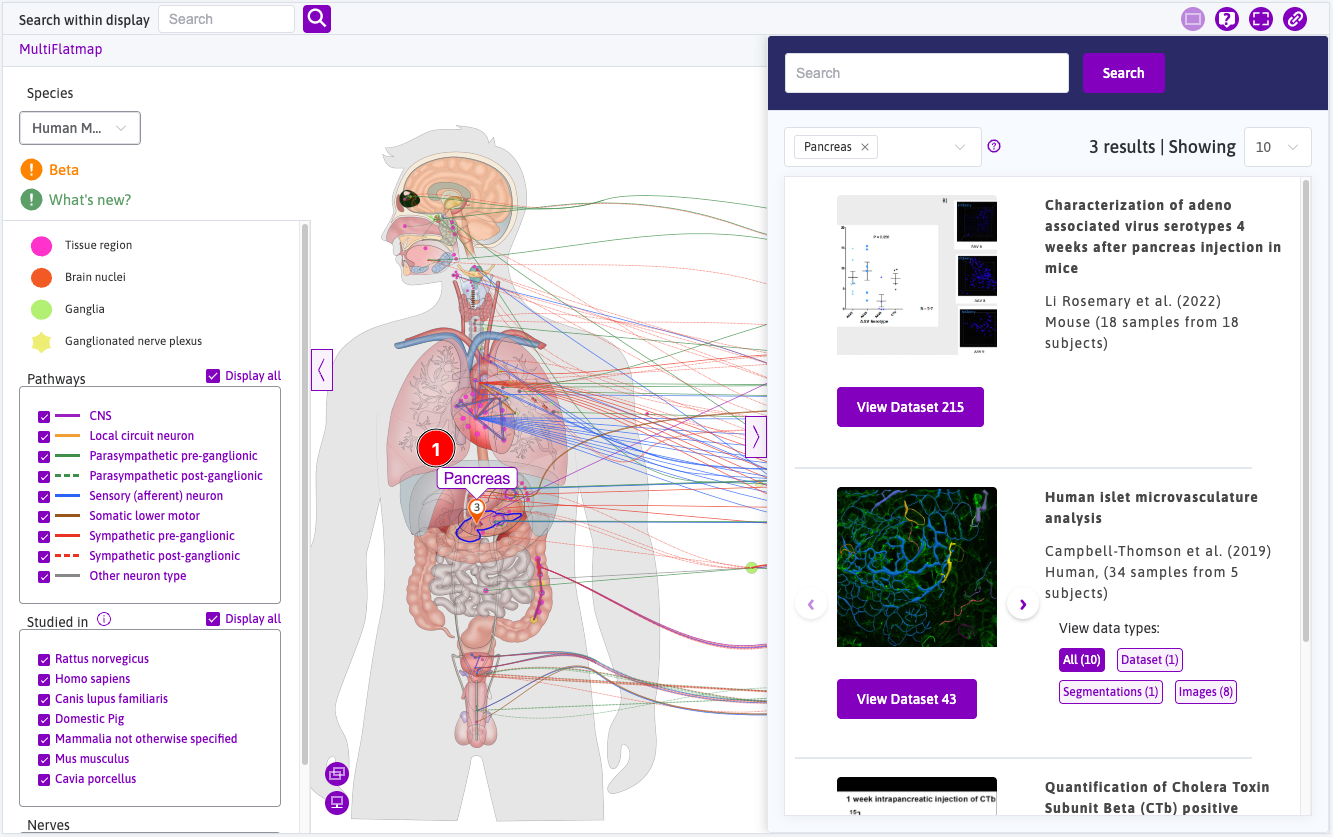
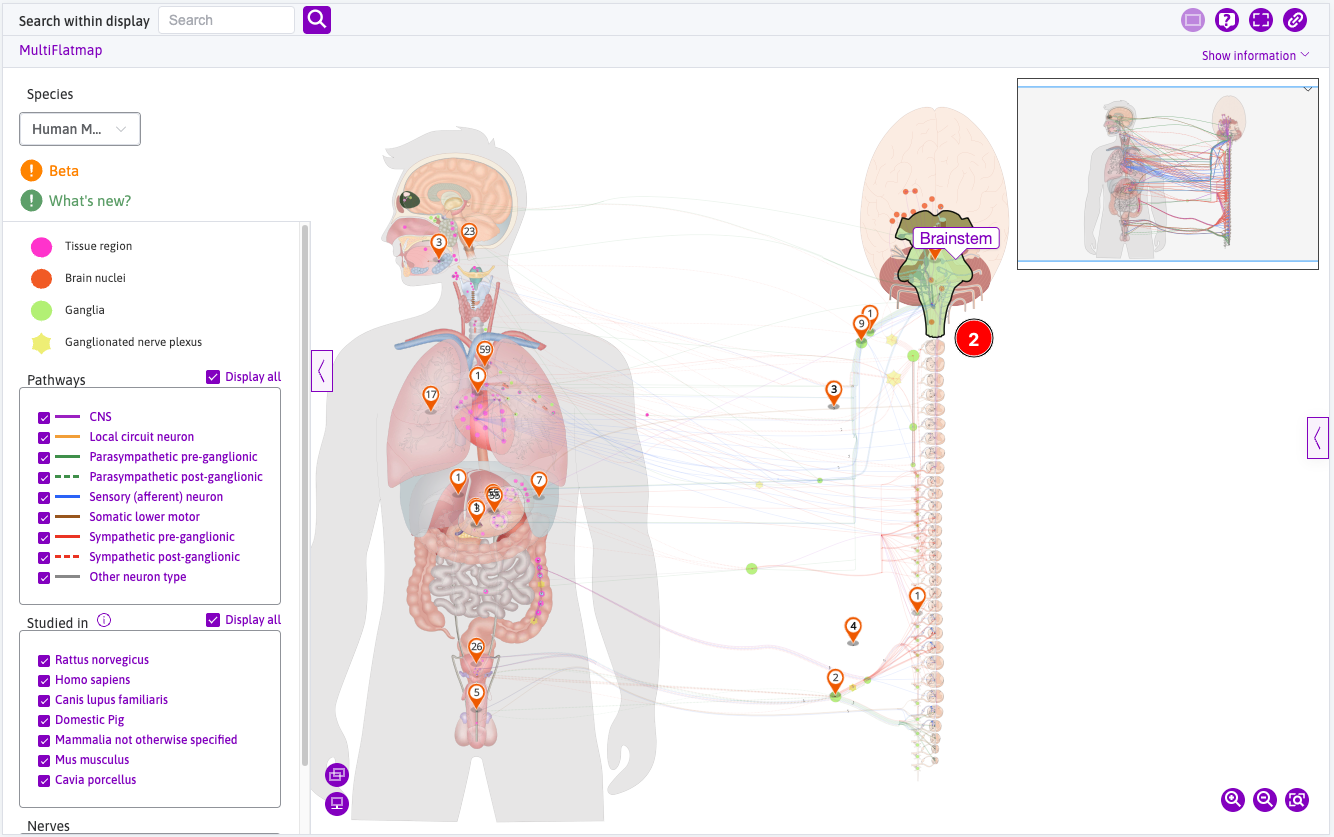
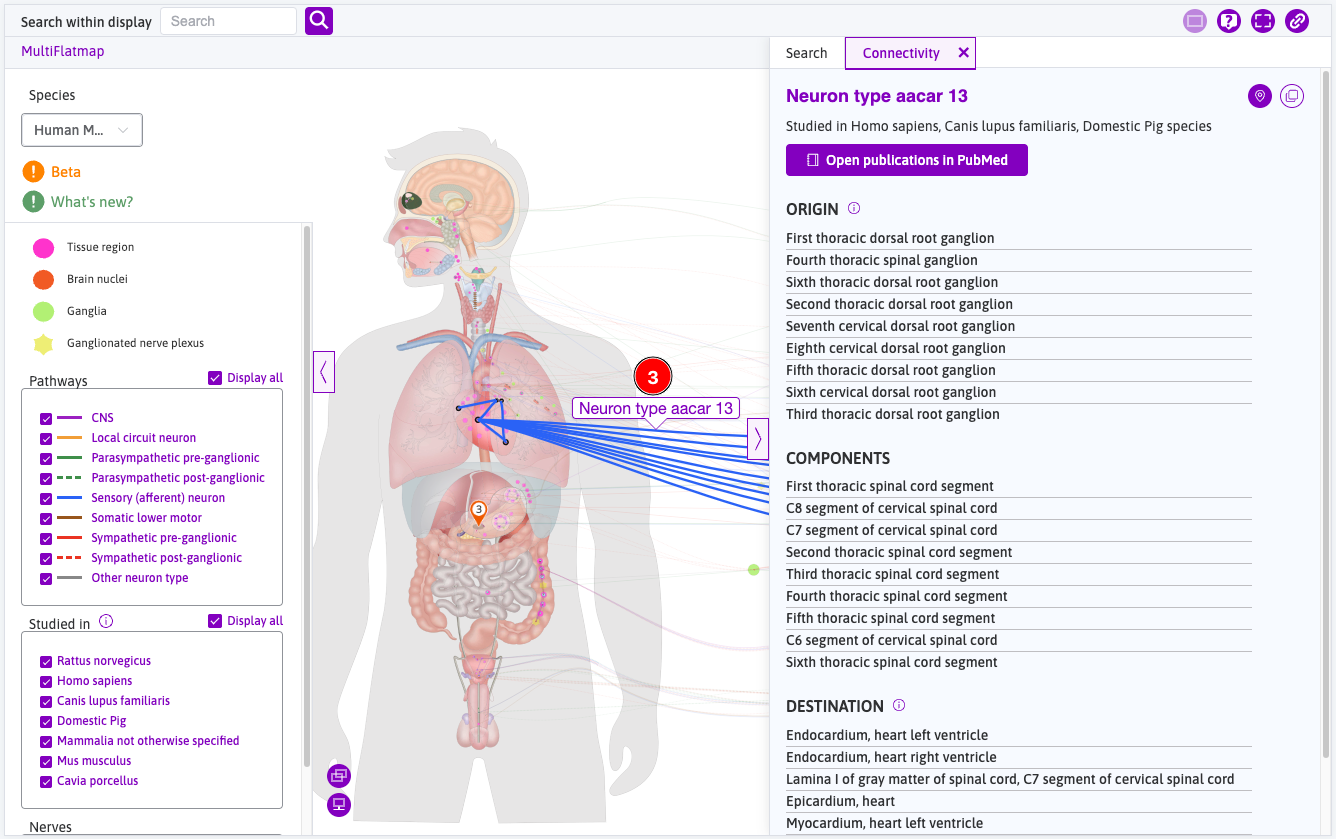
Open other maps
Anatomical Models
Access to anatomical scaffolds can be done either through the flatmap itself or through the sidebar, as illustrated here.
split screen
Integrated Map Viewer
The Integrated Map Viewer provides the point of entry to the different AC flatmaps.
Flatmap Viewer Display
The flatmap viewer consists of a zoomable map that includes various anatomical features associated with a particular species (human male, by default). From the flatmap viewer (Figure 1), you can:
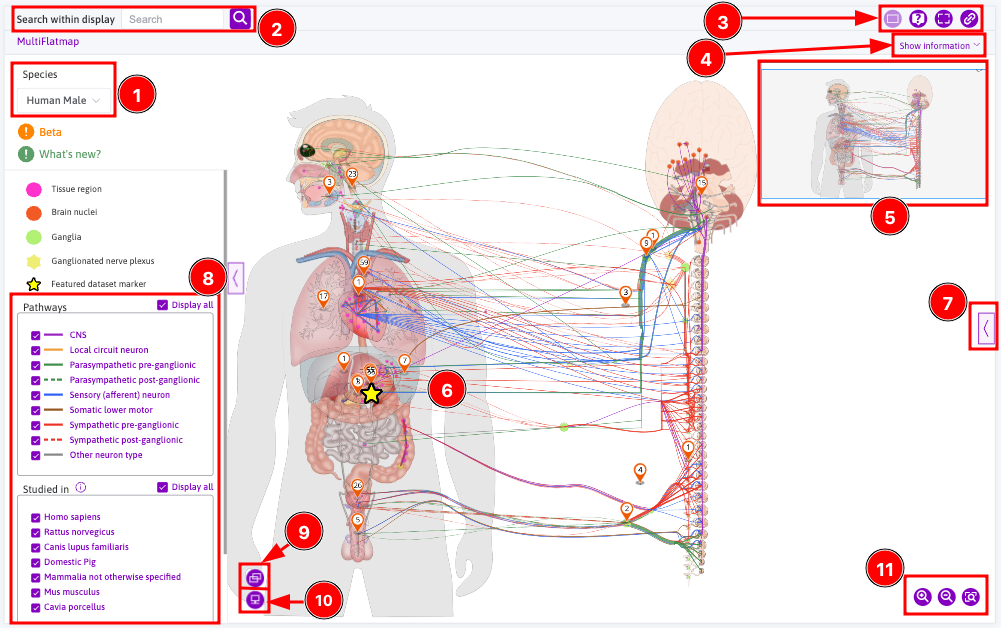
Figure 1: Flatmap viewer display
1. Change the species of interest
While the default integrated maps viewer show the Human Male, SPARC also offers Human Female, Rat, Mouse, Pig, and Cat.
_ Note:_ all flatmaps are currently showing beta connectivity features
2. Search for a particular anatomical feature
3. Take different actions
The different icons allow you to either:
- Split / rearrange the different views
- Open help mode to see tooltips with information about each feature on the map
- Toggle the fullscreen mode
- Get a permalink for the current view(s)
4. Show information of the Map
5. Use the minimap to navigate the (zoomed-in) flatmap
6. Interact with the flatmap itself
7. Access the sidebar
The sidebar is a powerful tool that allows you to find datasets from within the Maps interface. Use this chevron to show or hide the sidebar to search for specific datasets. Learn more about how to use the sidebar.
8. Display neural pathways
Decide to show or hide different neural pathways.
9. Open a new map
You can open an AC Map, FC Map, 3D Human Map, or Sync Map. Open Sync Map will open a 3D map viewer in split screen. Learn more about 3D Maps
10. Select viewing options
Change the background color, viewing mode, flight path display (2D/3D; Figure 2), the way organs are rendered
11. Zoom
Zoom in or out and reset the zoom level using these buttons. You can also change the zoom using your mouse.
Viewing Mode (10)
Switch to 3D on the flight path display (Figure 2, 1) and use mouse right-click to rotate the 3D map:
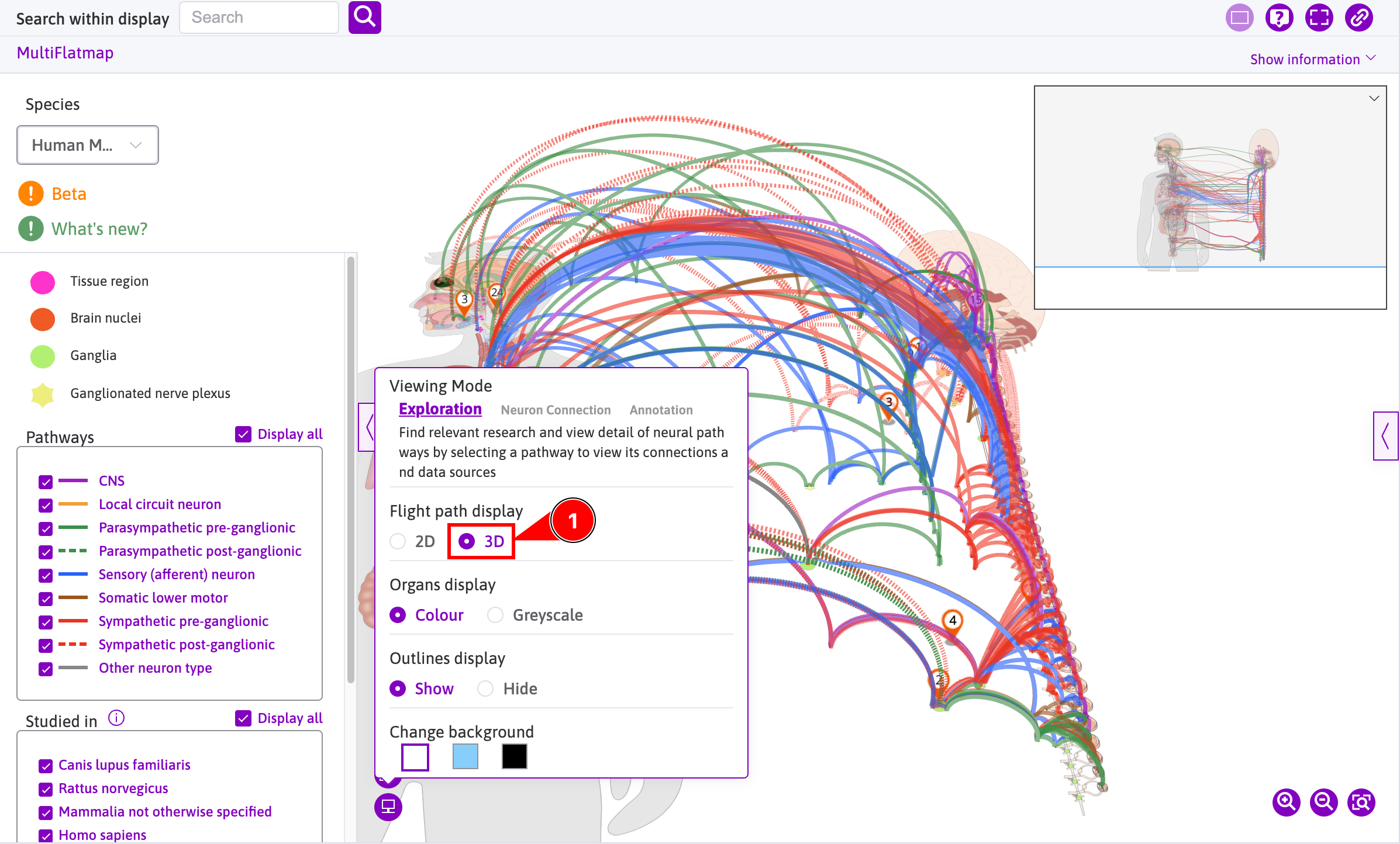
Figure 2: Viewing Mode options to change the flight path
Interacting with the display
The map/scaffold interface can be manipulated in various ways.
- When viewing the 2D flatmaps, left-clicking allows movement around the display.
- When viewing the 3D maps/scaffolds, left-clicking rotates the map/scaffold being viewed. Movement around the display can be achieved by right-clicking.
- Zooming in and out of the display can be achieved by scrolling, pitching in/out on a mousepad, or by the controls in the bottom left corner (as mentioned in part L of the Controls section).
Updated 22 days ago
